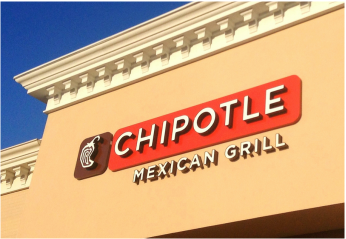
Whenever I'm struggling to design a market research presentation I can get inspiration from Nancy Duarte and her team. Her book, presentations and blog never fail to trigger a better way for me to represent data or findings.
I think one of the hardest things I have to do as researcher is to turn data and research findings into a compelling story.
1 Comment
 Social desirability bias isn't often discussed in depth in the context of market research, but it deserves more of our attention. By 'our' I mean those who design and conduct research and also those who examine and use it. Failing to consider and account for this type of bias places a huge question mark over the validity and reliability of market research and the decisions made from it. What is social desirability bias? Social desirability bias reflects people’s efforts to present themselves to others in a positive manner.  In the past, conscious consumers have found it difficult to make informed choices about the goods and services they buy. However, the explosion of digital technology and social media is fast bringing this challenge to an end. Today it is easier than ever for consumers to identify and reward companies behaving in socially responsible ways. The conscious consumer is someone who is aware their everyday purchase decisions are a means of bringing about positive change in the world. This could include buying fair trade, organic, locally made, environmentally friendly, animal friendly (including free from animal testing / free range / cruelty free) and products that are free from Fast food consumers can eat with a clear conscience. Wasn't this what we wanted all along?27/10/2014 We are seeing an unprecedented trend amongst consumers toward goods and services they can enjoy with a clear conscience. It’s happening across all categories, even in fast food. Consumers have been expressing more preferences for quality, wholesome ingredients, ethical farm practices and
 As a consumer researcher I firmly believe that consumers hold the power to shape how brands behave. Although brands are not without some influence in the marketplace, ultimately the balance of power sits with the end user - especially in today’s world where consumers are inundated with choice and information in every category. If brands engage in profiteering or harmful and destructive behaviors then consumers can do one of two things. They can endorse the behavior and ensure it continues by purchasing the brand’s products or services, or they can choose better behaved brands. If enough consumers do the  Back in October 2013 I published an article about the potential for brands to showcase product origins as digital stories. This is becoming more and more important as consumers are demanding increased transparency from brands about their product supply chains. Brands who show consumers where their product was sourced and how it is made will earn their trust. Brands who tell these same stories digitally to consumers in engaging ways to enhance the experience of the product will also earn their loyalty. I recently came across an Aussie brand called five:am yoghurt. An ad for them turned up in my Facebook Newsfeed and I was curious as  In December 2013 I was invited to be a panel member on the television program Good Business. Fair warning to you all. I have spoken in front of hundreds of people, sometimes for hours on end. I've had to conduct hundreds of debriefs with some of the biggest brands in the world. But being in a studio with a bunch of cameras on me really threw me. It was more than a little nerve wracking.  Who doesn’t love a celebrity sex scandal? In our celebrity obsessed culture, sex scandals don’t just make the news they are newsworthy in their own right. Images, interviews and social commentary about these events play out on all channels, including the most permanent one – the Internet. With easy access to volumes of information, people immerse themselves in playing both judge and jury. I’ll tell you who isn’t such a fan of the celebrity sex scandal. The Brand Manager whose celebrity just  I have recently had my nose in a great book called Digilogue by Anders Sorman-Nilsson. Fantastic read. Highly recommended for any business or brand wanting to identify ways and means of engaging with consumers in the digital age. Anders believes the most successful brands in the future will be those who manage to integrate a brand experience across online and offline channels - integrating 'digital' with 'analogue'. I would have to agree. Even when it comes to relatively quick and inexpensive purchases, consumers still show their capacity to enhance their experience by layering online and offline channels on top of one another. For example, customers at Starbucks can track where the beans were sourced that  Having a background in psychology I possess great respect for the tools and methods clinicians have developed to infer people’s underlying motives, attitudes and intentions. As a consumer researcher I use some of these tools to obtain valuable insights about brands, products and services. One popular group of tools spanning the clinical and consumer research worlds are known as projective techniques. The most well-known projective test in the clinical world would have to be the Rorschach Inkblot Test (pictured) where a series of |
AuthorDonna Bonde is the Owner and Director of Rapture Consulting. She consults to agencies and brands who want to better understand the way consumers think and behave. She bases herself in Sydney, Australia. Archives
May 2024
Categories
All
|
Proudly powered by Weebly



